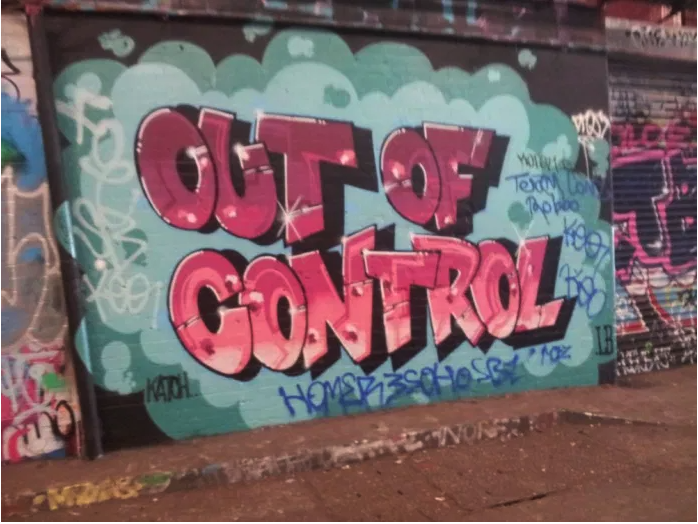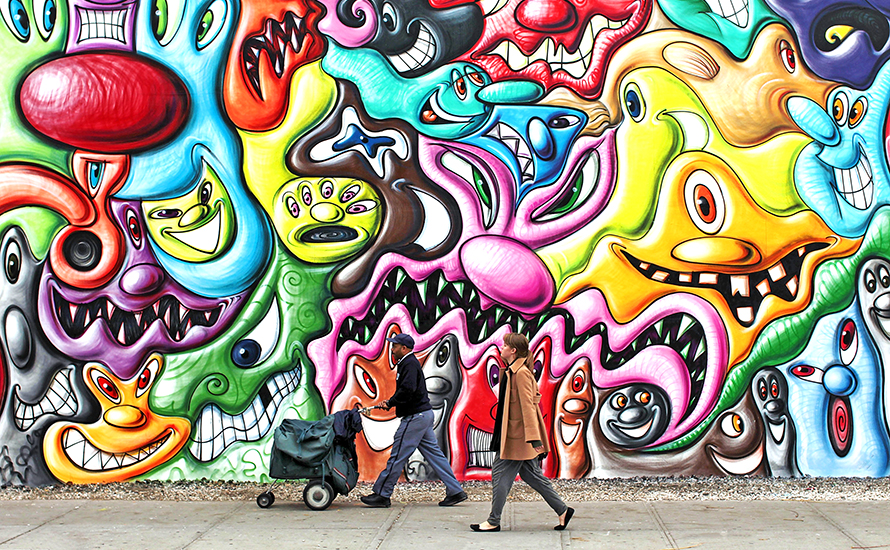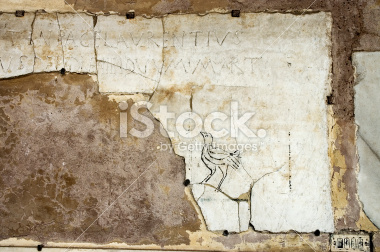The use of graffiti can be seen to some people as a work of art and to others as a work of something illegal. Graffiti can be defined as the drawing or writing of something unlawfully on a wall or other public surfaces through use of scribbling, scratching, or the spraying, usually by an individual or a group. In spite of the fact that some images of graffiti can be used as a way to impose symbolistic words or drawings by members of a gang, not all of graffiti is connected to gangs. It can be acknowledged as disruptive behavior with the purpose to gain notice of the public or as a way to find something thrilling in one’s life, but graffiti can also be acknowledged as a way to express one’s art form.
The history of graffiti, acquired by the Italian word graffio which means “scratch,” can be traced back to the ancient Roman ruins, to what is left of the Mayan city of Tikal in Central America, to rocks in Spain from the 16th century, and to the medieval English churches. In the 20th century, graffiti has become more closely related to gangs who use this art form for different reasons. People in gangs who do graffiti, use it as a way to mark their territory which in the 1990’s was known as “tagging.” Tagging was the recurrent usage of symbols warning and making sure other gangs or groups stay out of their area. These types of graffiti were located more in neighborhoods since they would attract the most attention of neighboring people. Other reasons gangs used graffiti would be to immortalize deceased gang members in an informal “obituary,” to illustrate boasting rights of crimes committed, and to be shown as a challenge to other rival gangs before any form of aggressive engagement with one another was done. Graffiti was commonly seen on subways, billboards, and walls in major urban centers, more especially in the United States and Europe.
People who are caught in the act of doing graffiti can get into lots of trouble with negative consequences of getting arrested, fined, and thrown into jail. A majority of jurisdictions passed laws that forbid graffiti because they saw it as an act of vandalism. These jurisdictions even tried to find ways to stop and remove graffiti in fear that it could cause the loss of value for the community. Clean up efforts were set in place for some cities and other cities even made mural programs called “free walls.” These walls give the urban youth legal rights to express their creativity in public spaces. Although people know that graffiti is illegal they still decide to do it. Even if a person or a group of people are not part of a gang, they do graffiti to bring more excitement into their lives. They crave the adrenaline rush that increases their heartbeat for the risk and chance of getting caught by the police from spraying public planes out in the open. The use of graffiti is also an outlet for people to show off their artistic skills. Open walls and canvas’ is like an invitation for these individuals waiting for it to be painted on. Being able to cover an open public wall with an artist’s work that will attract the attention of many people is a great accomplishment. The meaning and intentions behind graffiti can come in many different viewpoints. Artists may use it as a way to tell their story, whether good or bad, to bring attention to specific people, politics, different cultures, art, significant places, and social issues in society. People may view graffiti as an expression of public art like the murals made at the time of the Great Depression by the U.S. Works Progress Administration Federal Art Project. These works of graffiti can be utilized to adorn a neighborhood and will be used to speak on behalf of the interests of a community. Or it can just be used as a means to express oneself anonymously. Acts of spontaneously wanting to draw in public places causes graffiti to also be seen on walls of bathroom stalls and rundown buildings.
Graffiti can be greatly viewed in prominent urban areas like New York City and San Francisco. These art pieces seen on large building walls and subway cars, in a way, define the scenery. In the late 20th century, people in the art world were fascinated by this art style because it functioned outside the traditional canvas channels and labeled it as another form of self-expression. Although there are lots of questions surrounding graffiti as unlawful, since it can be seen as vandalism and a public nuisance, it is an important part of people’s lives as an innovative art form used to express their inner intentions as public artwork.
https://thehoovercardinal.org/1348/opinion/what-is-the-purpose-of-graffiti/









